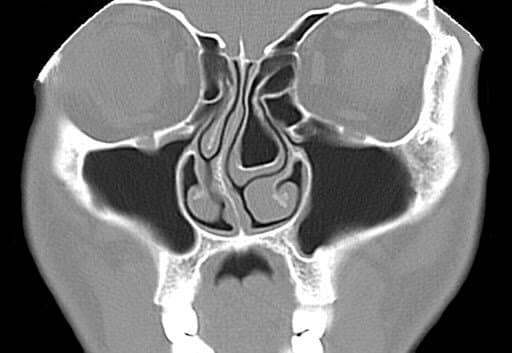Nasal Obstruction from Scar Tissue: Causes, Symptoms & Treatment
Breathing clearly through your nose is something most of us take for granted—until it becomes difficult. Nasal obstruction isn’t just annoying; it can disturb your sleep, affect your overall health, and make everyday activities more challenging. One common but often overlooked cause of nasal blockage is the formation of scar tissue inside the nasal passages. In this comprehensive guide, we’ll break down everything you need to know about understanding nasal obstruction from scar tissue—from what triggers this problem to how it’s diagnosed and treated.
1. What Is Nasal Obstruction from Scar Tissue—and Why Does It Matter?
Nasal obstruction refers to any blockage that limits airflow through the nose. While congestion from a cold or allergies is common and usually temporary, persistent blockage may signal a more structural issue, such as scar tissue. Scar tissue forms as part of the body's natural healing process, but inside the narrow nasal passages, it can create sticky bands called synechiae or adhesions. These bands connect surfaces inside the nose that normally remain separate, such as the nasal septum and/or the turbinates, and can physically block airflow, making it difficult to breathe through one or both nostrils.
Understanding nasal obstruction caused by scar tissue is important because this condition often does not improve without medical intervention. Left untreated, it can lead to chronic mouth breathing, which dries out your throat and mouth, disrupts your sleep, reduces your sense of smell, and increases your risk of sinus infections. For example, a patient might notice that their nasal breathing feels unusually restricted long after a routine nasal surgery, signaling the formation of scar tissue. Being informed about the causes, symptoms, and treatment options can empower you to seek timely medical care for better breathing and nasal health.
2. Causes of Scar Tissue in the Nasal Passage
Scar tissue never forms without a trigger. Understanding these common causes can help pinpoint the source of nasal obstruction and guide proper treatment.
2.1 Trauma and Injury
Physical injuries to the nose—whether from sports accidents, falls, or even chronic nose-picking—can damage the delicate lining inside the nasal cavity. When the body initiates healing, scar tissue may develop as the injured areas attempt to repair themselves. Unlike skin scars, these internal adhesions can create bands that bridge normally separate structures, leading to airflow restriction. For example, a soccer player who sustains a nose fracture might develop synechiae during the healing process, resulting in nasal blockage that persists after the swelling subsides.
2.2 Nasal Surgeries and Medical Procedures
Surgical procedures aimed at correcting nasal problems often involve manipulation of the nasal tissues. Nasal surgeries such as septoplasty (to straighten a deviated septum), turbinectomy (reduction of enlarged nasal turbinates), or sinus surgery are common interventions. While these surgeries generally improve airflow and nasal function, the healing process can sometimes produce scar tissue that forms adhesions between the nasal septum and/or turbinates. This scarring is a frequent, though unintended, consequence—patients may find their post-operative breathing obstructed if these adhesions develop. It’s akin to remodeling a narrow hallway: if the repaired walls stick together, the passage remains blocked.
2.3 Infections and Chronic Inflammation
Frequent or severe infections, such as recurrent sinus infections or chronic rhinitis (long-term inflammation of the nasal lining), can repeatedly irritate and damage the nasal mucosa. This repeated injury and healing cycle increases the risk of scar tissue formation. Severe or chronic inflammation from infections or allergies can sometimes contribute to mucosal injury that increases the risk of scar tissue forming adhesions. For many patients, persistent congestion and blockage evolve despite treatment because the mucosa undergoes ongoing cycles of inflammation and repair, leading to internal nasal scarring.
Recognizing these triggers can guide both prevention and effective treatment.
3. Symptoms of Nasal Obstruction Due to Scar Tissue
Nasal obstruction caused by scar tissue often feels different than the temporary congestion associated with colds or allergies. Recognizing these symptoms can prompt earlier diagnosis and treatment.
3.1 Common Signs
- Difficulty breathing through one or both nostrils: Often, the airflow remains reduced on one side even when no allergy or cold symptoms are present. It may feel as if breathing through a narrow straw.
- Persistent congestion or blockage: Unlike seasonal or infectious congestion, scar tissue-related obstruction rarely improves with over-the-counter nasal sprays or decongestants. The blockage is usually constant and unrelenting.
3.2 Associated Symptoms
- Reduced or altered sense of smell (hyposmia to anosmia): When airflow is obstructed, odor molecules cannot reach the olfactory receptors effectively, dulling your sense of smell and often affecting how food tastes.
- Nasal dryness or crusting: Scar tissue can disrupt the normal humid environment of the nasal passages, leading to dryness and crust formation that can be uncomfortable and persistent.
- Snoring or disturbed sleep: Mouth breathing is often a consequence of blocked nasal airways. Breathing through the mouth increases your risk of snoring and sleep disturbances, leading to morning fatigue and reduced quality of life.
Dr. Anna Maxwell, an ENT specialist, notes, “Patients often describe a sensation of ‘something stuck’ inside their nose that never clears up. When this sensation lasts for weeks, scarring or adhesions should be considered.”
Being aware of these signs can help you seek prompt evaluation.
4. How Is Nasal Obstruction from Scar Tissue Diagnosed?
Diagnosing nasal obstruction due to scar tissue is essential for effective treatment. Here’s what to expect during evaluation:
4.1 Physical Examination
An ENT (Ear, Nose, and Throat) specialist will begin with a detailed physical exam. Using a headlight and a nasal speculum—a small instrument to gently widen the nostril—the doctor visually inspects the nasal cavity for signs of scarring or adhesions.
4.2 Nasal Endoscopy
The key diagnostic tool is a nasal endoscopy, which involves inserting a thin, flexible tube equipped with a small camera and light into the nasal passages. This allows the physician to see inside the nose in great detail and confirm the presence, location, and extent of scar tissue. The endoscope can reveal narrow or completely blocked airflow channels resulting from nasal synechiae.
For more complex cases or to assess deeper structures, your doctor might order a CT scan. This imaging technique can help rule out other causes of obstruction and provide a clearer picture of the nasal anatomy.
Early and accurate diagnosis supports better treatment outcomes.
5. Treatment Options for Nasal Obstruction from Scar Tissue
The main goal of treatment is to reopen the nasal passages, relieve symptoms, and prevent scar tissue from returning. Treatment approaches vary depending on severity.
5.1 Medical Management
- Nasal steroid sprays: These anti-inflammatory sprays can reduce swelling and local inflammation around scarred areas, potentially easing symptoms and limiting additional scarring. While they do not dissolve existing scar tissue, nasal steroids reduce inflammation that may limit further scarring. Use of these sprays should be guided by a healthcare provider, especially after surgery.
- Saline rinses: Regular saline nasal irrigation is a simple, effective way to clear crusts and debris, keep nasal passages moist, and promote healing. Saline rinses also reduce irritation that can exacerbate inflammation.
5.2 Surgical Intervention
When obstruction is significant or persistent despite medical therapy, surgery is often required.
- Scar tissue removal (lysis of adhesions): During this procedure, an ENT specialist uses delicate instruments to carefully cut and remove scar bands that block the nasal passage. This reopens the airway and restores airflow.
- Nasal splints or spacers: To prevent the newly separated tissues from sticking together again, splints or spacers may be inserted post-surgery. These devices keep opposing surfaces apart during the critical healing phase—similar to placing spacers between painted surfaces to keep them from bonding.
- Adjunct procedures: If other nasal structures, like swollen turbinates or the deviated septum, contribute to obstruction, they may be addressed simultaneously to improve airway patency.
Dr. Maxwell explains, “Surgical lysis of adhesions combined with postoperative care dramatically improves nasal airflow and patient comfort.”
5.3 Post-Treatment Care and Prevention
Successful treatment depends on diligent post-operative care:
- Nasal hygiene: Continued use of saline rinses and prescribed nasal sprays helps reduce inflammation and prevents crusting.
- Avoid nose trauma: It’s essential to avoid picking, blowing the nose aggressively, or exposing the nose to irritants like smoke and dust during healing.
- Regular follow-ups: Follow-up visits with your ENT are critical to monitor healing and catch any early signs of scar tissue recurrence.
For a deeper dive into treatment and comprehensive ENT care, visit our Comprehensive Otolaryngology Care page.
Combining surgical and medical treatments with careful aftercare provides the best results.
6. FAQs: Common Questions About Nasal Obstruction from Scar Tissue
Can scar tissue in the nose come back after surgery?
Yes. Scar tissue can reform if healing is incomplete or if the nasal lining is repeatedly irritated or traumatized. Using nasal splints and following detailed post-op instructions significantly reduces the chance of recurrence.
How soon should I see an ENT if I have nasal blockage post-surgery?
If you experience new or ongoing nasal obstruction after nasal surgery, schedule an appointment promptly. Early intervention improves outcomes by preventing chronic scarring and further complications.
Are nasal sprays effective for scar tissue-related obstruction?
Nasal steroid sprays help by reducing inflammation around scarred areas but will not dissolve existing scar tissue. They are most effective as part of ongoing maintenance therapy following surgical treatment and should be used under physician guidance.
What lifestyle changes can help prevent scar tissue formation in the nose?
Maintaining gentle nasal hygiene, avoiding nose-picking and trauma, managing allergies effectively, and protecting your nose against injury are key preventative measures.
For more on overlapping nasal symptoms, check out our guide on Symptoms of Sinus Problems.
7. Lifestyle Tips to Improve Nasal Health and Breathing
Adopting healthy habits can support nasal function and reduce the likelihood of scar tissue formation:
- Keep nasal passages moist: Use a humidifier at home, especially in dry climates or winter months. Saline sprays also help maintain tissue hydration.
- Avoid nasal trauma and irritants: Avoid smoking and minimize exposure to dust, chemical fumes, or other irritants that can damage sensitive nasal tissues.
- Manage allergies proactively: Follow environmental controls and medications prescribed by your doctor to reduce ongoing inflammation and scar risk.
- Seek timely medical evaluation: If you notice persistent nasal congestion or difficulty breathing through your nose, seek prompt medical evaluation. If you have a deviated septum, learn about deviated septum relief, as this condition can worsen scar tissue-related obstruction.
Healthy habits complement medical treatment to support nasal health.
8. Conclusion
Nasal obstruction from scar tissue is a significant but often overlooked cause of chronic nasal blockage. Whether resulting from injury, surgery, or chronic inflammation, scar tissue can create a physical barrier inside your nose that often does not improve without medical intervention. Early recognition, precise diagnosis, and comprehensive treatment—including surgical removal when needed—are crucial to restoring clear nasal airflow. With proper care and follow-up, many patients enjoy improved breathing, better sleep, and enhanced quality of life.
If you’re struggling with ongoing nasal blockage or suspect scar tissue may be the cause, the Sleep and Sinus Centers of Georgia team is here to support you—from diagnosis through treatment and beyond. Don’t let scar tissue stand in the way of your best health.
Book an appointment today to start breathing easier.
References:
- All About Nasal Synechiae – Dr. Lech Korytkowski
- Removal of Nasal Adhesions and Scars – Fi Clinica
- Nasal Injury & Obstruction – Royal Buckinghamshire Hospital
For more information on the symptoms, causes, and treatment options for other nasal and sinus issues, visit Sleep and Sinus Centers of Georgia.
This article is for educational purposes only and is not medical advice. Please consult a qualified healthcare provider for diagnosis and treatment.
Don’t let allergies slow you down. Schedule a comprehensive ENT and allergy evaluation at Sleep and Sinus Centers of Georgia. We’re here to find your triggers and guide you toward lasting relief.




